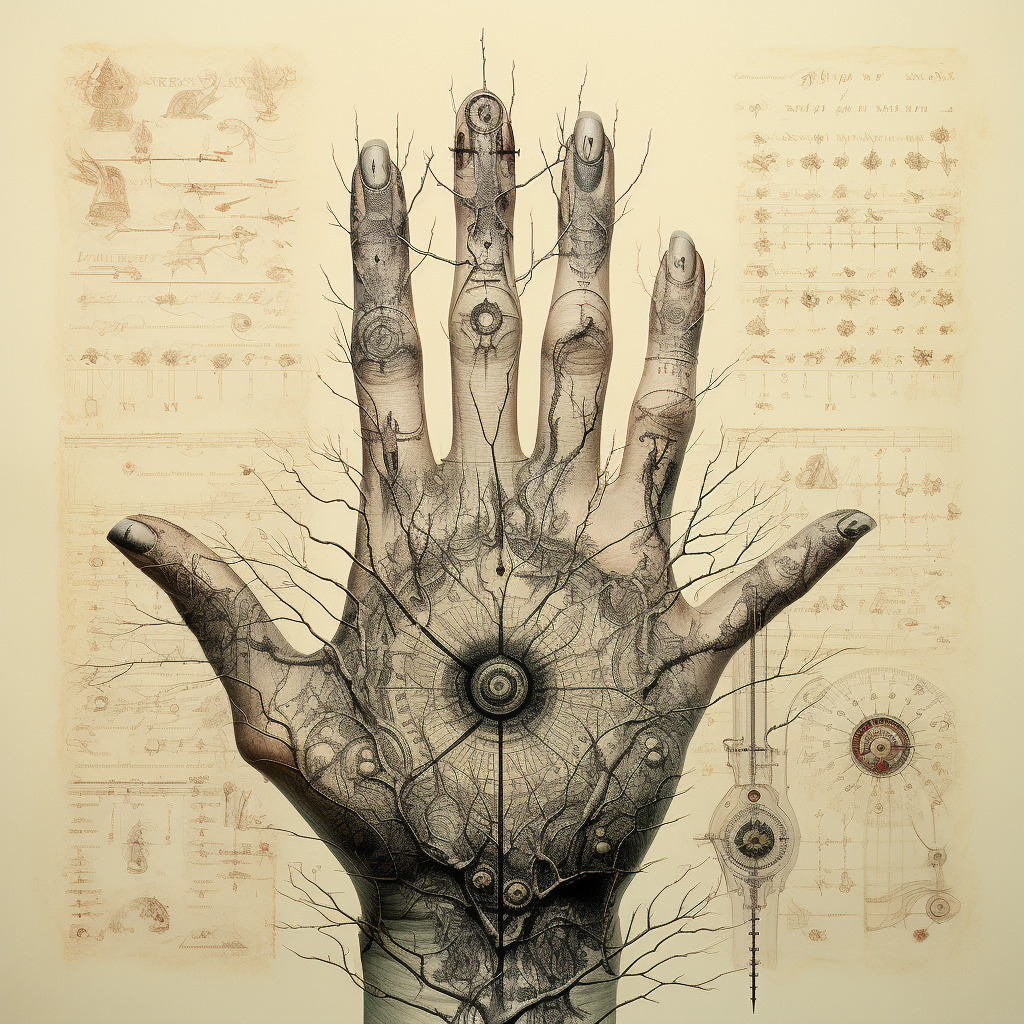
Palmistry, also known as chiromancy, is the ancient practice of reading the lines and mounts on the palms of the hands. To gain insight into a person’s character, talents, health, and future events. Evidence proves palmistry originated in ancient India over 5000 years ago, with references to it found in early Vedic scriptures. From India, the practice spread to China, Tibet, Persia, Mesopotamia, Egypt, and Greece.
The roots of palmistry lie in Hindu astrology and Roma fortune telling. By reading the palm, palmists believe they can gain an understanding of a person’s destiny by interpreting the symbolic meaning behind the palm’s characteristics. The practice is closely tied to astrology and the celestial bodies impact human lives and events.
In many spiritual traditions, the palm is seen as a link between the physical body and the spiritual body. The right hand was considered masculine, solar, and active, while the left hand was seen as feminine, lunar, and receptive. The dominant hand for an individual would reveal information about their primary character traits.
The Major Lines and Mounts
Palmists analyze the major lines and mounts on the palm when doing a reading. The four main lines are the heart line, head line, life line, and fate line. The mounts refer to the fleshy areas of the palm, and correspond to the Sun. Jupiter, Saturn, Mercury, Venus, Luna, Mars, and Neptune. The relative sizes and shapes of these lines and mounts provides information into a person’s talents, health, relationships, prosperity, and lifespan.
For example, a long, straight heart line suggests the person is ruled by logic whereas a curved heart line indicates a highly emotional nature. A forked head line can signify strong intuition. The closer the life line lies to the thumb, the more vitality the person has. Mounts that are highly developed indicate the person has talents related to that mount’s ruling planet.
Palmistry’s Enduring Popularity
While skeptics view palmistry as a pseudoscience without scientific basis, palm reading continues to fascinate people across the globe. For believers, palmistry provides spiritual insight into their unseen potentials, talents, challenges, and opportunities. Contemporary palmists incorporate psychology, holistic healing, and intuition with traditional principles when reading a palm.
As an ancient mystical art passed down through the ages. Palmistry endures today both as a tool for cultivating self-awareness and as a way to feel connected to the wisdom of the ancients. With its roots in astrology and spirituality, palmistry allows practitioners to glimpse a person’s destiny and life path imprinted on the palm. For devotees, it remains a timeless way to reveal mysteries of the self and the universe.
